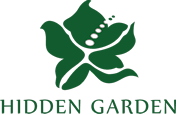RACE, RIGHTS, AND RESEARCH IN CARIBBEAN ETHNOBOTANY
by Rachel Thomas
It was almost twenty years ago when I first arrived in Costa Rica. Already a student of herbalism in a classroom setting, I was attracted to the possibility of learning about plants directly from those who used them ancestrally. Lucky for me, and many others like me, Costa Ricans tend to be open in sharing stories about their botanical allies. I was in herbalist heaven.
Over time, I have come to see the other side of that heaven. I started to realize that while my knowledge was increasing, the general population was losing its traditional wisdom. The easy part has been finding ways to conserve the medicinal plants. The real challenge is to help community elders to conserve the traditional ways of life that are interdependent with the natural world, the living context in which their herbalism thrives.
I share this story to raise consciousness and encourage advocacy of the survival of traditional wisdom amongst any peoples who are practicing their culture in the face of modern life and assimilation, and especially those peoples who have been forcibly separated from their traditions or their homelands.
When I settled in the remote fishing village of Puerto Viejo, I was hoping to find a local healer to study with. I learned that there were a few Caribbean women in town and a few Indigenous men in the nearby mountains, but that none of them were taking on students or apprentices. In the decade that it took me to find a Caribbean Herbalism teacher, my research came from the local population’s knowledge about basic self-care using plants. Although many Caribbean people now go to the doctor in the case of extreme pathology, a majority continue to use herbal and other wellness traditions for prevention and basic health maintenance (Picking et al, 2011).
Unlike in a structured environment, learning folk medicine out in the field meant that not all of my teachers were shamans, granny healers, or ethnomedicinal experts. My research has relied on a healthy combination of quality (a well-known healer giving advice) and quantity (10 non-experts all giving similar advice). For example, we can validate the use of lemon grass (Cymbopogon citratus) for fever reduction in the Caribbean without an expert, simply by learning its local name, fever grass. This methodology allows ethnobotanists to do research in communities where there are no longer traditional healers practicing or teaching, and to harvest important remnants of ancestral knowledge in situations where significant loss of cultural practice has occurred.
Despite the ubiquity of home remedies in modern Caribbean homes, academia has traditionally neglected the ethnomedicine of the African Diaspora of the Americas (Voeks & Rashford, 2013). The largely untold story is that Africans brought their wellness traditions with them to the Americas, including their herbal medicine, food preparation, permaculture, spirituality, music, dance, and their sacred relationship with nature. These were the healing tools that facilitated the survival of Africans and their descendants in the Americas (Carney & Rosomoff, 2009).
To what extent are these survival tools still available in the African Diaspora of the Americas? There are only a few areas where remote communities have conserved large amounts of their original African culture. There are, for example, villages in Surinam and Brazil where African descendants have lived almost independently for centuries (Van Andel, 2015). A classic ethnobotanical goldmine, these villages maintain language, agricultural, cultural, and medicinal practices that can be traced directly back to Africa. However, as in many parts of the Americas, these African-descendants are still in a struggle for land rights and political representation.
The complicated history of Costa Rica’s Caribbean coastal areas has also resulted in a land rights struggle and a lack of cultural protection for African descendants. The majority of Afro-Costa Ricans and their ancestors came from the Caribbean islands, where centuries of slavery had institutionalized a lack of respect for native African cultures. Interestingly, although customs such as dress and language were targeted for assimilation, Africans were not uniformly discouraged from using their wellness traditions, including their knowledge of plants, to stay healthy (Carney, 2003). These practices reduced the amount of “medical” attention required by slaves, and therefore would have been seen as advantageous. There are many examples, in fact, of Africans using their plant wisdom to help their captors. The most legendary is the 18th century African man known as Quasi, for whom the powerful bitterwood, Quassia amara, was named. Although he was abducted into slavery as a child, Quasi was an herbalist and healer, whose plant medicine brought him his freedom and helped him live for almost a full century (Carney & Rosomoff, 2009, p.90).
In addition to the wellness traditions that Africans brought with them from Africa are those which they learned from the Indigenous people of the Americas. These cultural exchanges have been poorly documented for centuries. Up until recently throughout the Caribbean, Indigenous people have been incorrectly portrayed by academia as having been annihilated. Anthropological and ethnobotanical studies, as well as DNA testing, now tell a different story. In Jamaica, many scholars believe that Taino people living inland had integrated with escaped slaves, intermarrying as well as sharing tools of medicine that still exist in Maroon communities today.
Read the rest of this article, on page 39, published in the Journal of Medicinal Plant Conservation by United Plant Savers.







